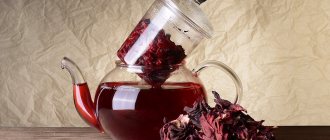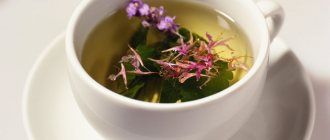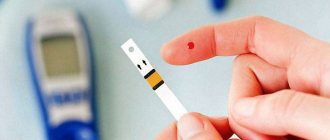DlyaSerdca → Hypertension → How does red wine affect blood pressure?
It is a well-known fact that a normally functioning cardiovascular system is the key to the health of the entire body. Blood pressure is an indicator by which the health of blood vessels and the heart is judged, and if it begins to increase or decrease, then this indicates the presence of problems in the body. At the same time, it is necessary to know exactly how the consumption of drinks containing alcohol (in particular, wines) affects the development of vascular pathologies.
In order to know the state of health of your circulatory system, you need to regularly visit a cardiologist, who can identify a developing disease at the earliest stages and help avoid serious problems in the future.
Persons with the following diagnoses should not drink drinks containing alcohol:
hypertonic disease;- vegetative-vascular dystonia;
- migraines of various etiologies;
- allergies of any type;
- bronchial asthma;
- stomach and duodenal ulcers;
- gastritis;
- pancreatic diseases (pancreatitis);
- disorders of the nervous system (stress, depression, etc.);
- alcoholism.
It is also important to remember that alcohol is incompatible with medications, because most often it enhances the effect on the body of the main active ingredients in the medicine. If, after drinking alcohol while on medication, a person develops the following symptoms and signs, he or she needs emergency medical care:
- there was a sharp jump in blood pressure, it either increased or decreased to critical values (150/100 and above or below 90/50);
- signs of arrhythmia;
- increased heart rate;
- there are signs of confusion, incoherent speech, delirium;
- fainting;
- increased physical activity;
- pale or red skin;
- cold extremities;
- signs of complete or partial paresis;
- incessant vomiting.
For those people who are undergoing drug treatment for hypertension or suffer from arterial hypertension, doctors recommend completely abstaining from alcoholic beverages.
Increases or decreases blood pressure
Red varieties of the drink are recommended for hypertensive patients. White wine, due to its low content of resveratrol, which cleanses blood vessels, does not lower blood pressure. And its effect on the body depends on the amount of drink, the individual characteristics of the body, age and many other factors.
With high blood pressure, a small portion of alcohol can temporarily reduce the tonometer readings. But when it enters the bloodstream, vasodilation and spasm occur. Blood pressure levels return to their previous levels.
Hypertensive patients should drink alcohol only in moderation.
In this case, white or red wine must be dry, vintage (high quality and without preservatives). A favorable dose is 40-60 ml of drink per day.
Beneficial substances contained in wine
Dry red wine contains a large amount of fruit acids that have an antispasmodic effect, therefore helping to lower blood pressure.
Wine made from red grape varieties contains large amounts of polyphenols. Thus, resveratrol, which is contained in the skin of grapes, has cardioprotective, hepatoprotective, anti-inflammatory and antitumor effects, improves the supply of oxygen to cells, reduces blood glucose levels, accelerates cellular metabolic processes, and prevents obesity.
Procyanides, which are also found in dry red wine, prevent the development of hypertension, coronary circulatory failure, myocardial infarction, and atherosclerosis.
Tannin, present in grape seeds and stems, prevents blood clots and improves vascular elasticity, which makes it possible to use wine to prevent pathologies of the heart and blood vessels.
In addition, dry red wine contains vitamins A, groups B, C, E, PP, iron, iodine, potassium, magnesium, phosphorus. There are more antioxidants in red wine, but they are believed to be more effective in white wine.
Dry red wine increases the concentration of nitrogen in the blood, which dilates blood vessels and lowers blood pressure.
Beneficial properties of the white variety
In terms of its qualities and effects on the body, white wine is inferior to red wine due to the lower content of beneficial microelements and the density of the consistency. But this drink has a beneficial effect on the functioning of the cardiovascular system and the body as a whole, although it has disadvantages.
| The benefits of dry white wine | Harm |
|
|
Moderate consumption of white varieties of the drink helps improve lung function, strengthen blood vessels in the brain and heart, and protect blood vessels from destruction in smokers.
But it is important to understand that white wine increases blood pressure when consumed in excess (more than a glass).
Summing up
Such a serious vascular disease as hypertension requires the patient to comply with all recommendations and prescriptions of the attending physician. Therefore, it should be remembered that fortified wines and strong alcohol, as well as all white and sweet red wines, increase blood pressure. The consumption of dry red wine, which helps normalize blood pressure, should be carried out on the recommendation and under the supervision of the attending physician. Clinical experience suggests that increasing the daily dose of dry red wine during a course of enotherapy has a negative impact on health, worsening the patient’s health.
Similar articles
How can ginger affect blood pressure levels?
Basic nutrition for hypertensive patients
Osteochondrosis of the cervical spine and hypertension: relationship, diagnosis and treatment
Why do dizziness occur when blood pressure is normal?
Author of the article:
Elena Demidova
about the author
Did you like the article?
Let us know about it -
rate
What wine is best to drink for hypertension?
Hypertensive patients are advised to drink dry wine with a sour taste. It must be of good quality and without preservatives.
Red wine is considered healthier than white wine!
For people suffering from high blood pressure, it is better to drink red varieties not constantly, but in courses and small portions (30 mg). This form of therapy must be agreed with your doctor.
White and red wine are good for lowering blood pressure levels when combined with mineral water in a 1:2 ratio. The drink contains fruit acids, which help dilate blood vessels.
Recommendations and opinions of doctors
Recognizing the therapeutic effect of natural red wine with a strength of no higher than 11 degrees, doctors give the following recommendations for its use:
Doctors recommend drinking 100 g of red wine per day, which corresponds to 2 – 3 glasses per week. It should be remembered that increasing the dose can cause the opposite effect in hypertensive patients, up to a hypertensive crisis;- the wine must be aged, of good quality, without dyes or flavors;
- if desired, the wine can be diluted with water in a ratio of 1 to 2, the therapeutic effect will remain.
A famous practicing doctor, nutritionist with extensive experience, N. M. Samokhina, has been involved in the issues of healthy nutrition and nutrition for many years. Since she was born and raised in the Caucasus, issues of drinking wine, and dry red wine in particular, have always been an area of her interest, because... The Caucasus is famous for its long-livers.
Based on the results of many years of observations and research, she concluded that daily consumption of dry red wine in doses not exceeding 150 ml helps normalize blood pressure and reduce blood cholesterol levels, even in patients who have suffered from cardiovascular diseases for many years. Patients who underwent examination and treatment courses from the doctor noted a significant improvement in their condition, which was confirmed by the examination results.
Drink rate
Most doctors categorically deny the benefits of wine for patients with hypertension due to its ambiguous effect on the body. After all, at first, alcohol dilates blood vessels, accelerates the outflow of blood from the brain and reduces the load on the vascular surface.
But after some time, there is an increase in heart rate and heart rate, as well as an increase in blood pressure. The feeling of lightness that a person experiences after drinking a glass, after 30 - 40 minutes, is replaced by a worsening of the condition.
Therefore, people who are saving themselves from hypertension with medications are not recommended to drink wine.
In other cases, 50 ml per day is the maximum allowable dose.
Clinical histories of patients undergoing enotherapy courses
Currently, in medical practice there are more and more examples of the effectiveness of the use of enotherapy in the treatment of hypertension. Experience with its use has been mostly positive, but existing negative results have been closely studied. As a rule, it turns out that patients changed the dosage without permission, and also committed abuse during therapy. As a result, the effect was exactly the opposite. Both positive and negative results can be examined using specific examples from medical practice.
For example, patient Konstantin B., 57 years old, diagnosed with arterial hypertension of the 2nd degree, the disease was expressed in constant high blood pressure 145/97 mm Hg, shortness of breath, increased fatigue. On the recommendation of the attending physician, he constantly took antihypertensive medications. There was no lasting improvement for a long time. On the recommendation of a nutritionist, he began a course of treatment with dry red wine, in a dose of 50 ml daily at lunch and in the evening with meals. Treatment was accompanied by a diet low in salt and fat. A month later, a persistent decrease in blood pressure was diagnosed to 127/85; according to the results of laboratory tests, cholesterol levels dropped to normal. The patient himself noted a general improvement in well-being and quality of life.
There are already enough such examples in medical practice, so doctors are increasingly confident in declaring the benefits and therapeutic effect of drinking natural wines from red grapes.
A clear example of the negative result of an attempt to treat hypertension with dry red wine is the clinical case of patient N. There is a history of excess weight, a persistent increase in blood pressure to 150 - 160 mm Hg, and an increased concentration of cholesterol and sugar in the blood. Diagnosis: stage 2 hypertension, stage 2 obesity. On the recommendation of the attending physician, the patient was to drink 100–150 ml of red wine every day at lunch. During the treatment process, N. repeatedly exceeded the dosage determined by the doctor and replaced dry wine with a sweeter analogue, explaining the replacement by the fact that he did not like the taste of dry wines. The combination of these factors led to the fact that the patient was diagnosed with an acute condition - a hypertensive crisis, and he was hospitalized in a hospital.
As for the use of wine to increase blood pressure in cases of pronounced hypotension (constant upper pressure values not exceeding 90 mm Hg), in such cases it is best to carry out enotherapy (wine treatment) using good quality dry white wine.
Note! It is known that white wines contribute to a gradual, gentle increase in blood pressure.
In some cases, doctors recommend just such treatment in combination with other health measures.
Clinical examples of enotherapy with dry white wine include the case of patient K.
Age 25 years, history of all signs of anemia, confirmed by laboratory test results. Blood pressure indicators – 80-90/ 50-60 mm Hg. Along with taking vitamin and mineral complexes to stabilize blood pressure, the doctor recommended drinking a glass of dry white wine with dinner every day for a month. Based on the results of a repeated examination and examination by a doctor, it was established that the patient’s working blood pressure reached 100 – 105/65-70 mmHg, which confirms the beneficial effects of wine therapy in this case.
Contraindications
You should stop drinking alcohol if you have:
- coronary heart disease;
- hypertension;
- mental disorder;
- gastritis;
- pancreatitis;
- ulcers of the stomach and duodenum;
- asthma;
- blood diseases;
- alcohol and drug addiction;
- allergies;
- migraines.
White wine is strictly contraindicated during drug treatment. Alcohol in combination with medications can cause death.
Dry white wine only in small doses can have a positive effect on the body and not harm hypertensive patients.
But during a regular feast, if consumed in moderation, it can cause a hypertensive crisis. A moderate dose once a week and within the normal range can reduce the risk of developing cardiovascular diseases by 15% and strokes by 20%. Author of the article Svetlana Anatolyevna Ivanova, general practitioner
The effects of alcohol on the human body
Drinking any alcoholic beverages in an abnormal dose has a detrimental effect on the human body. At the time of admission, substances that relax blood vessels and lower blood pressure enter the body. After some time, the heart muscle begins to contract with redoubled force, as a result of which an increased amount of blood enters the heart chambers, causing an increase in intravascular parameters. This indicates the inadmissibility of drinking alcoholic beverages in the presence of hypertension.
Wine is the only drink allowed for hypertensive patients, but it must be real: without impurities, preservatives, and made from real grapes. It is best to make such products yourself, because only high-quality wine will be beneficial for the body.
A few facts about natural wine
The beneficial properties of wine are legendary.
Researchers are finding more and more new arguments - from the ability of wine to protect against heart attack to a positive effect on hearing. What exactly? Did you know that wine contains:
- tannins, which kill bacteria no worse than antibiotics
- substances that break down fat and prevent its accumulation in the liver
- antioxidant resveratol from the skin and seeds of grapes, it protects blood vessels from “bad” cholesterol and protects against cancer
However, all this applies to real, natural wine, and not to that “cocktail” of stabilizers, dyes, preservatives, “flavored” with alcohol, which can often be found on store shelves.
What happens to your digestion when you drink natural wine?
A. Enjoyment of taste. In the oral cavity, where digestion actually begins, wine causes the salivary glands to work more actively, and the receptors of the tongue to enjoy the bouquet. There are studies that wine kills bacteria in the mouth, treats sore gums and protects against sore throats and herpes.
However, if you savor glass after glass, the likelihood of developing an alcohol addiction increases. So be careful with tastings.
B. Why is it better for an “ulcer sufferer” to be a “teetotaler”? Once through the esophagus into the stomach, wine stimulates the production of gastric juice and increases acidity. Therefore, if you have an ulcer or worsened gastritis, replace the wine with still water.
B. Closer to the exit. In the intestines, wine polyphenols help beneficial microflora and stimulate its functioning. Those who drink the right wine in the right quantities are not at risk of constipation and colitis.
G. “Pancreatic” matters. But the pancreas does not like alcohol - ethyl alcohol destroys its cells. You only need 20 g of alcohol per day for 5 years - and the pancreas will “refuse” to produce its enzymes and will “float” with fat. Although, some researchers have noted that pancreatic cancer appears less often in those who drink 1 glass of wine a day.
D. The main “factory” of the body is how to preserve the liver? The liver “endures” for a long time. Even low-quality cheap wine with sulfur dioxide as a preservative. However, her “patience” ends if she is overloaded with excess and low-quality alcohol - no one has yet canceled cirrhosis. Although, on the other hand, good red wine prevents fat from accumulating and turning into useless connective tissue. It's a matter of quantity - no more than 150 ml for women or 300 ml for men per day.
Security questions
One glass of red wine with a volume of about 150 ml contains a little more than one unit - 12 ml of pure alcohol. A unit
is a unit adopted in Europe equal to 10 milliliters of ethanol.
The dose considered relatively safe for women is two units, for men - three. That is, just a couple of glasses of wine for women is already more than the maximum permissible daily limit of alcohol. “This is a lot,” says Evgeny Brun, director of the Moscow Scientific and Practical Center for Narcology. — If you do the math, it turns out that with a daily glass of wine a person drinks 54 liters per year, which is equivalent to 11 liters of vodka or 4 liters of alcohol per year. Formally, this doesn’t seem like much, but the World Health Organization recommends that you never drink more than 2 liters of alcohol per year.” Gastroenterologists also accept the theory regarding the safe amount of alcohol
, but only in relation to the liver and with reservations. The liver will process a couple of units a day without any problems - however, if it is absolutely healthy. At the same time, for some other organs, for example, the pancreas, there is no safe amount of alcohol, and they suffer from any dose of ethanol.
Criteria for choosing white wine
You should only drink high-quality wine and purchase the drink from a trusted manufacturer. The grape variety doesn't really matter. White wines are classified into strong, dessert (sweet), and table wines.
To provide an antihypertensive effect, drinks without added sugar, alcohol, or sulfur dioxide are suitable, although this substance is required to prevent fungus or mold. Such a composition, even with a small portion, can cause intoxication and aggravate the general condition of arterial hypertension.
It is necessary to carefully study the composition on the label to avoid unpleasant complications. Hypertensive patients should pay attention to high-quality homemade wines that exclude impurities and some chemical components. Homemade wine reduces the risk of allergic reactions due to the purity of the composition, the absence of individual additives and flavorings.
When choosing industrial wine, you should pay attention to the bottle design, design, and quality of excise stamps. Any doubts exclude the purchase of the product.
White wine is a delicious drink that can decorate any table, lift your spirits, and calm you down. However, exceeding the daily dosage can be very dangerous for patients with arterial hypertension. When adequately prescribed by a doctor, wine therapy strengthens blood vessels, improves the absorption of medications, and has a stimulating effect on the immune system.
How to drink
As practice shows, in fact, “prevention” rarely ends with one glass a day. As a rule, people drink much more
than they intended. Thus, residents of the UK manage to drink a whole bottle of wine more than they planned in a week. And over the course of a year, 225 million liters of excess alcohol “flows” across this country. “In addition, you can’t immediately determine whether a person has risk factors for alcohol,” says Brun, “this is only revealed in hindsight, when abuse begins.” The effect of wine antioxidants can only be noticed in the future, but ethanol, contained in all alcoholic drinks, begins to work immediately. After the first glass, the likelihood of developing a stroke increases 2.3 times and decreases by 30 percent only after 24 hours. Attempts to “raise hemoglobin” and “improve appetite” with a glass of wine during pregnancy are especially dangerous. The alcohol contained in any alcoholic drink freely penetrates into the baby’s blood through the placenta. The body of the unborn child is not able to cope with toxic substances that disrupt its development. Alcohol has also been recognized as a drug that causes the most severe consequences from use. On a 100-point scale assessing the harm of psychoactive substances to humans, alcohol is in first place with 72 points, ahead of crack and heroin. “Our everyday culture is to drink alcohol for any reason,” reminds Brun, “this should not happen.”
Popular varieties and drinking culture
Dry white wine is a beautiful and healthy ritual when consumed correctly. The light taste goes perfectly with fish, cheese, and lean meat (poultry, beef). Fruits, berries, and vegetable snacks go well with the drink. The bouquet of taste largely depends on the original raw materials and grape variety. Popular varieties of high-quality white wine are:
- Riesling. German grape variety with an apple aftertaste. The Riesling variety is widely used to prepare the drink in Argentina, Austria, and the USA. Austrian wine differs most from other producers in its saltiness of taste, so it goes perfectly with fish and seafood.
- Chardonnay. A traditional grape variety from Burgundy with a citrus aftertaste. Tasters claim that when consumed correctly, the aroma of winter freshness is first felt, and then the zest. The drink goes well with turkey, beef, mushrooms and Japanese delicacies.
- Muscat. A popular grape variety of the Mediterranean and Crimea. The fruits carry the aroma of pollen. Muscat wine is drunk with cheese and biscuits.
- Sauvignon Blanc. White wine has a rich range of aromas and flavors. Experts notice spicy, floral, fruity and herbal notes. This wine is made in Chile, the Mediterranean, South Africa, and New Zealand.
White Riesling wine
Dry white wine is recommended to be drunk with a high-quality snack, this is the only way to reveal its aroma. The drink is served in a beautiful wine glass with a thin stem.









